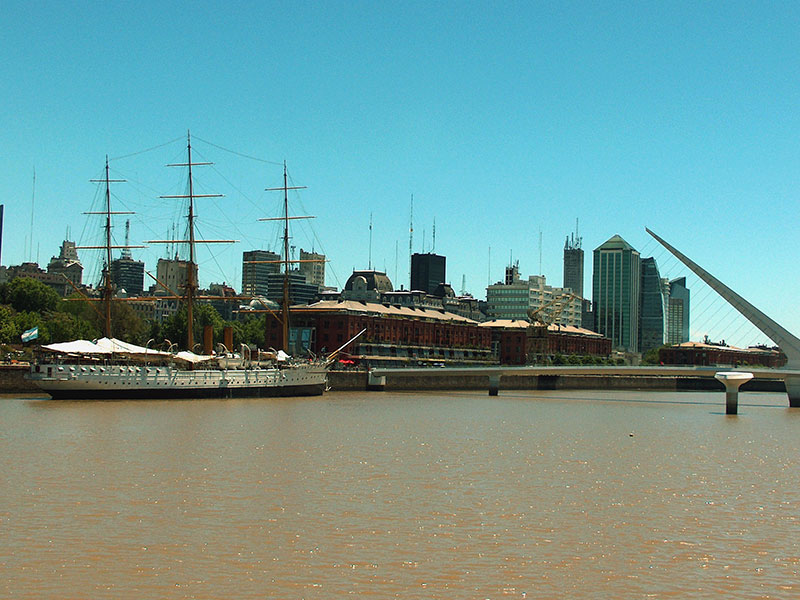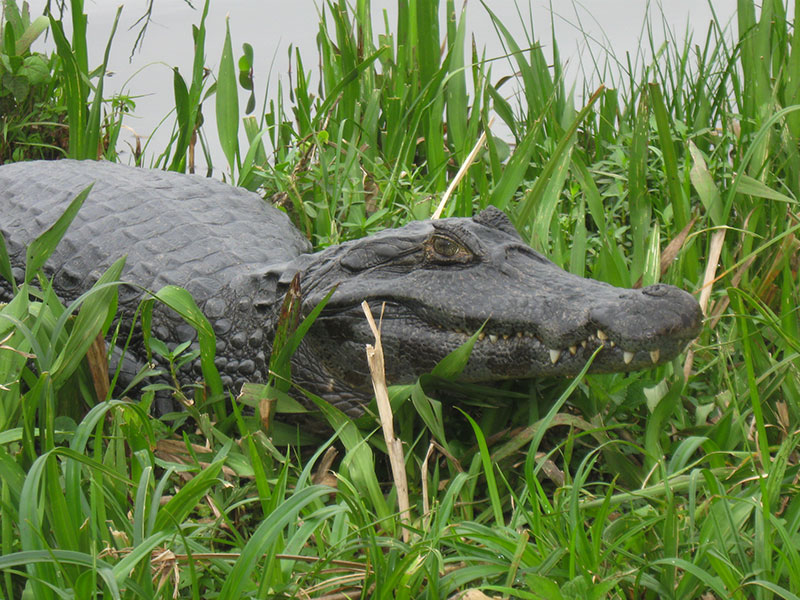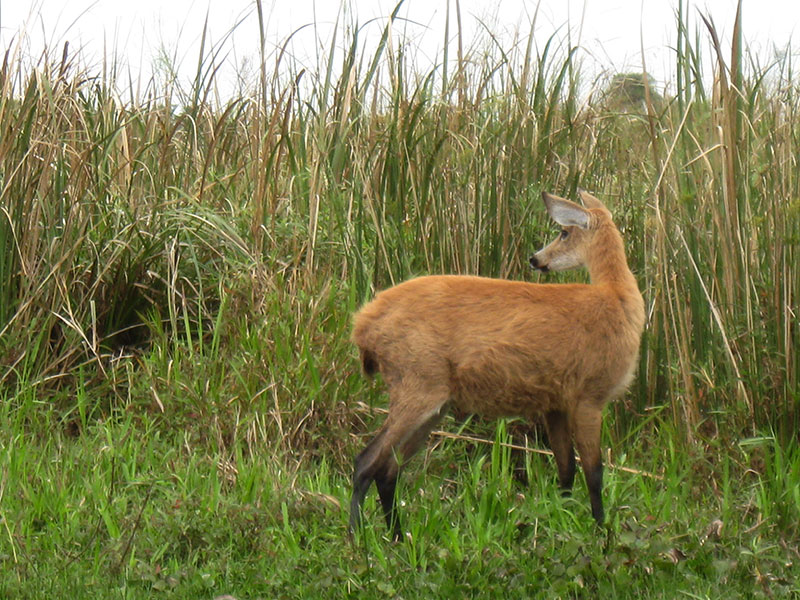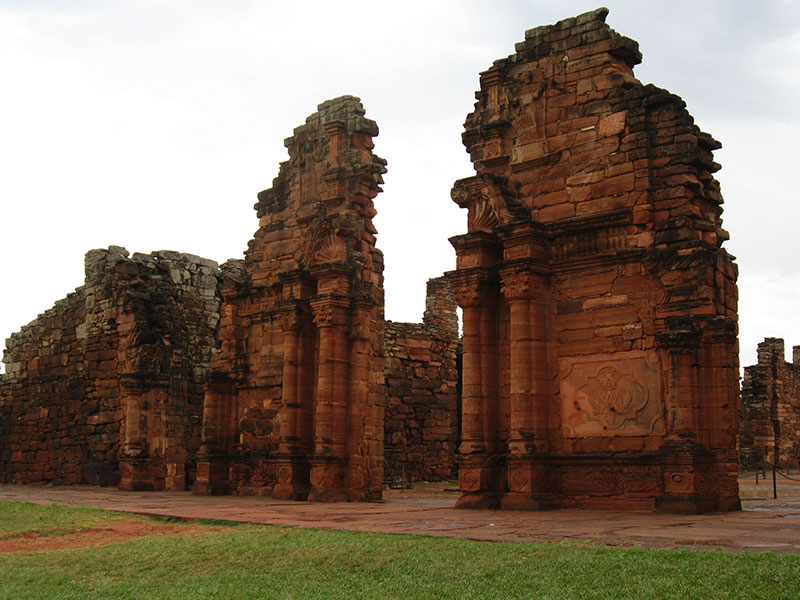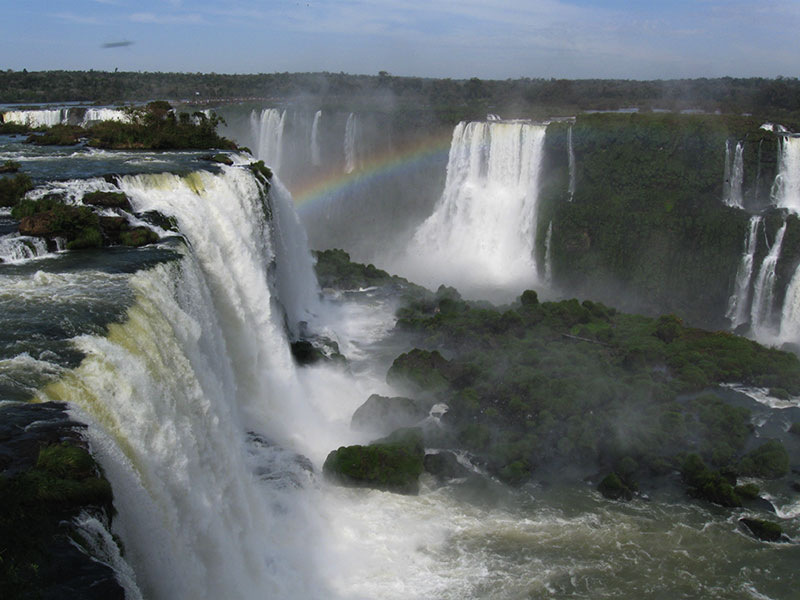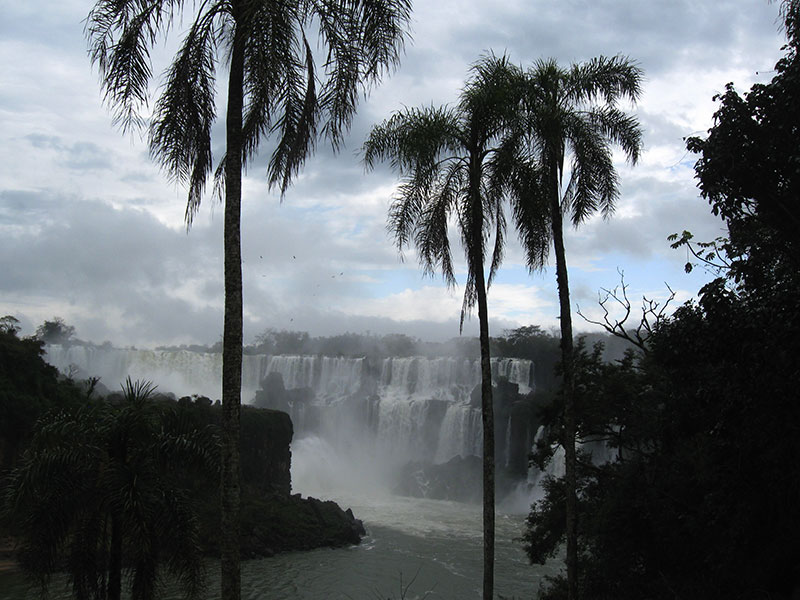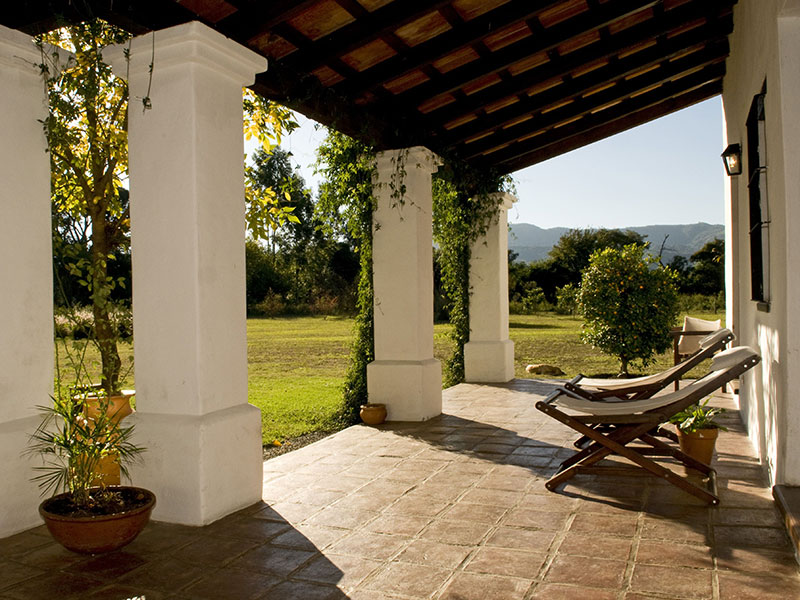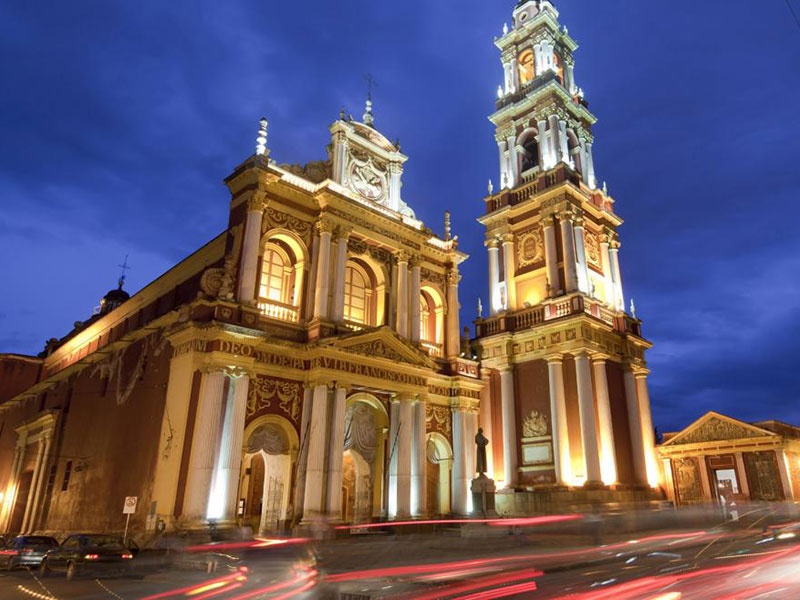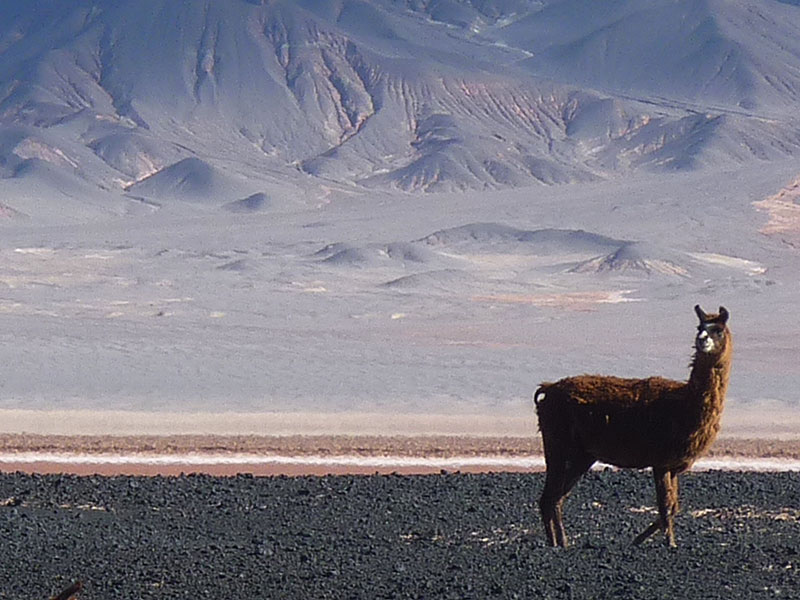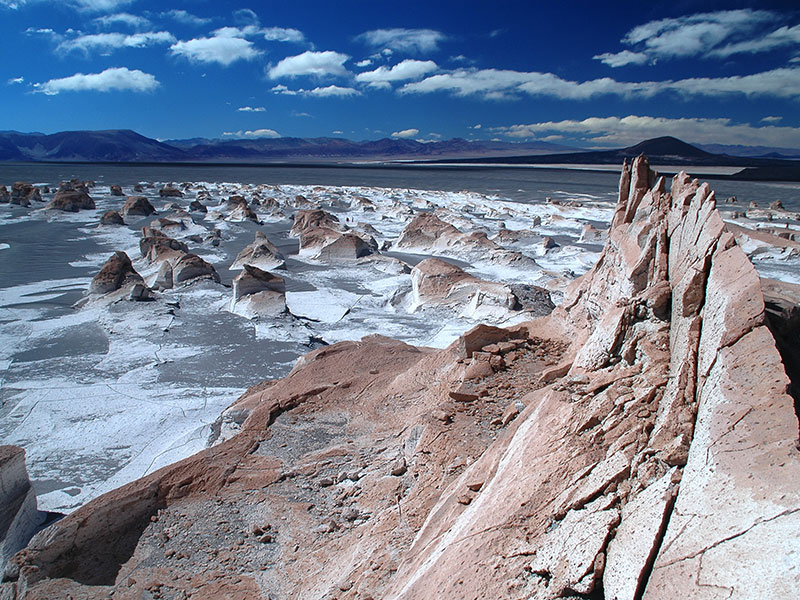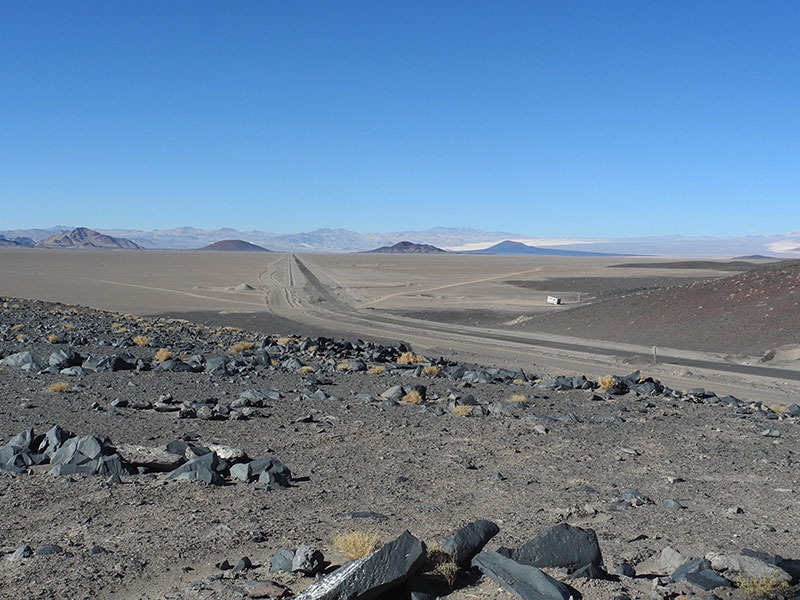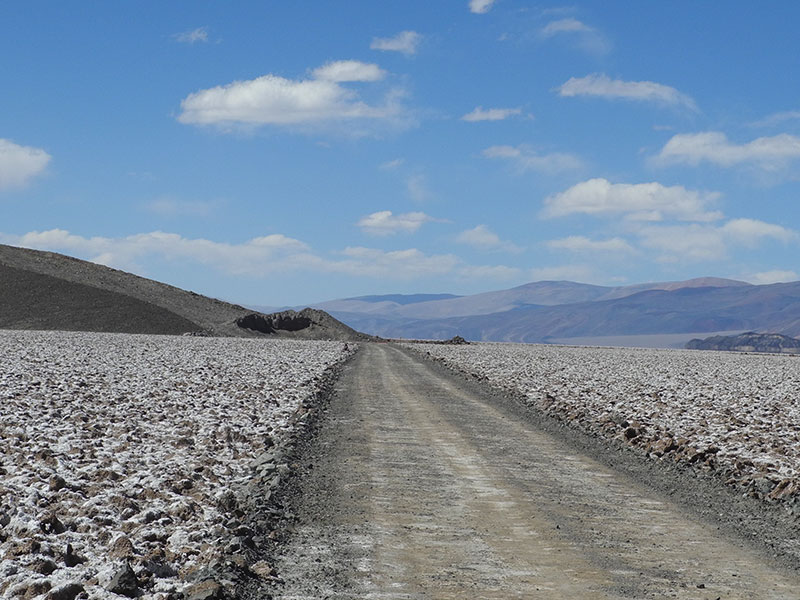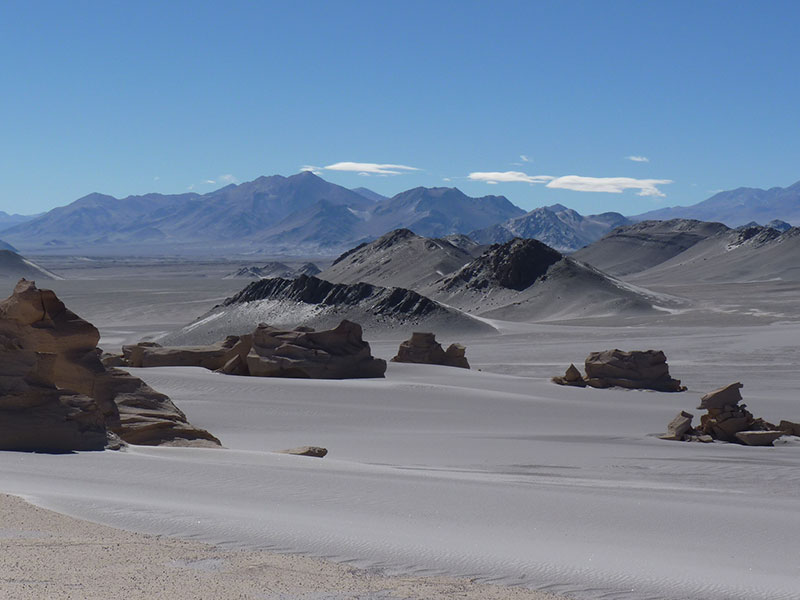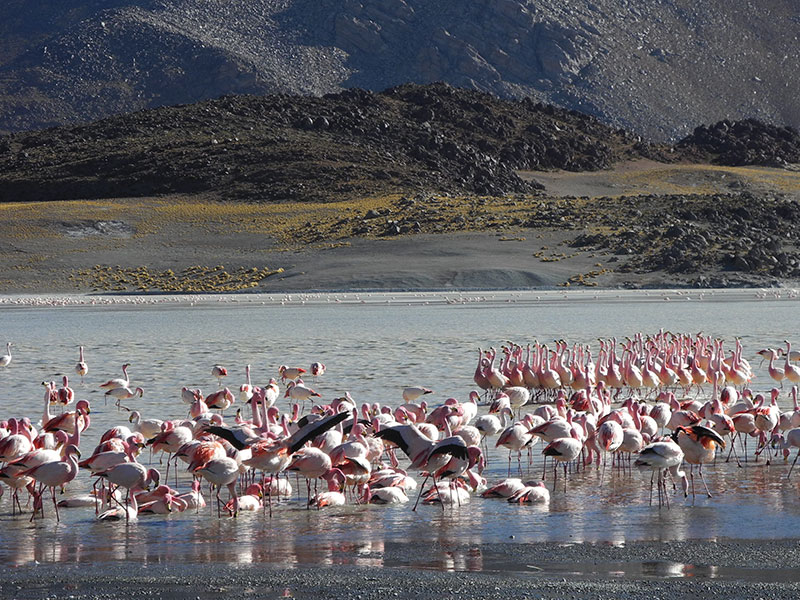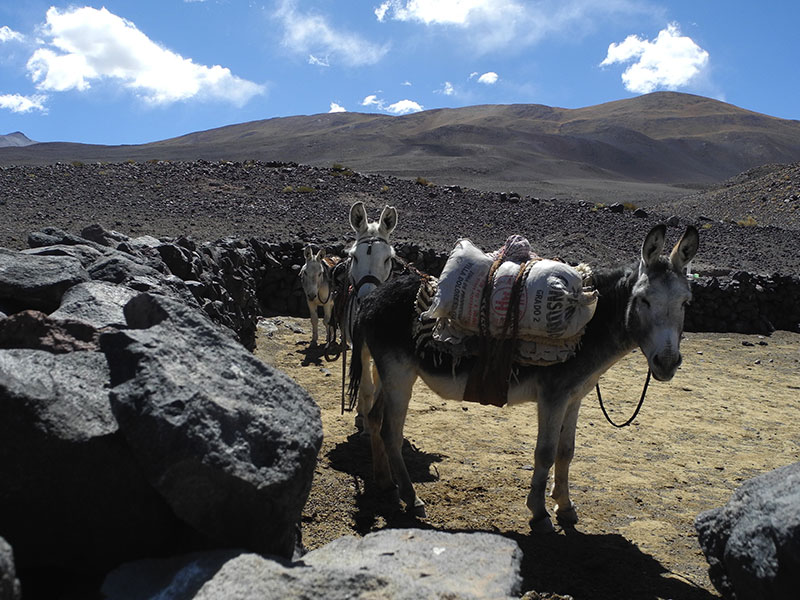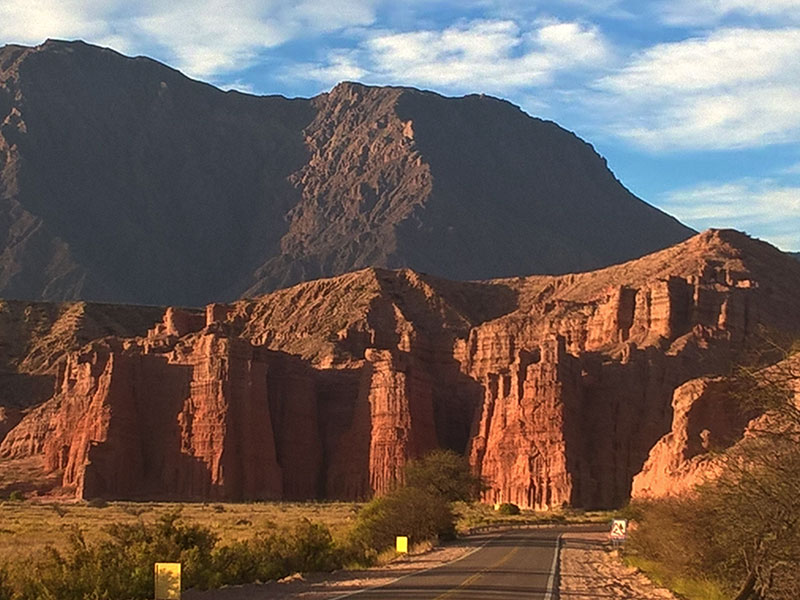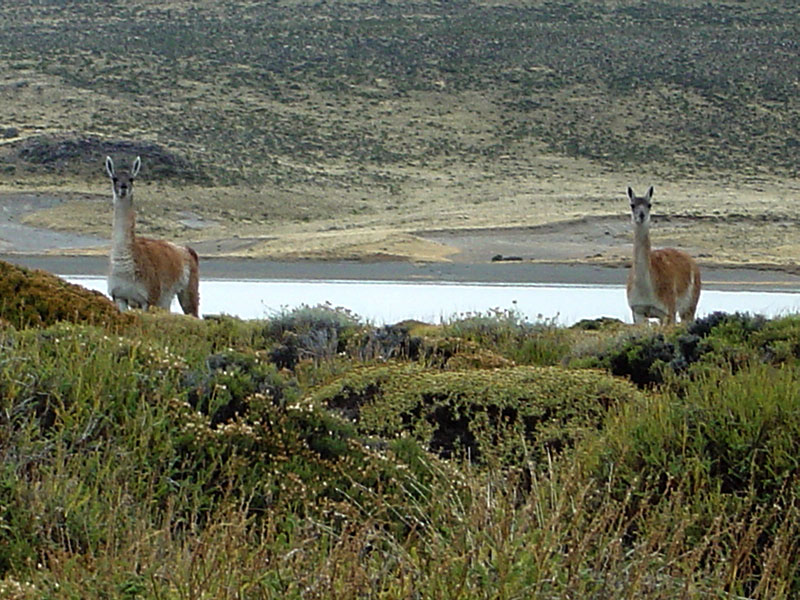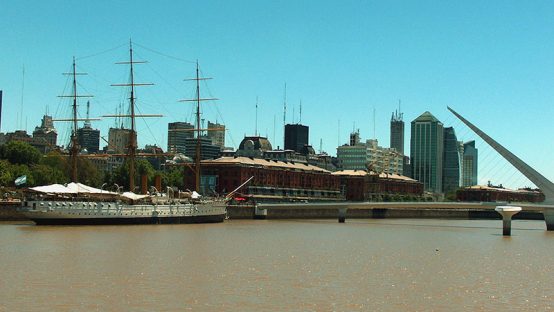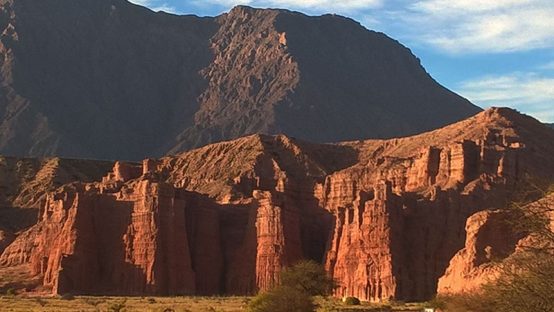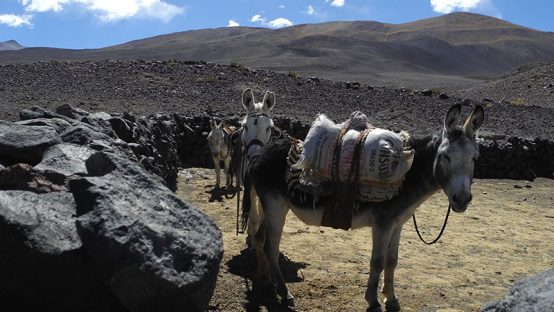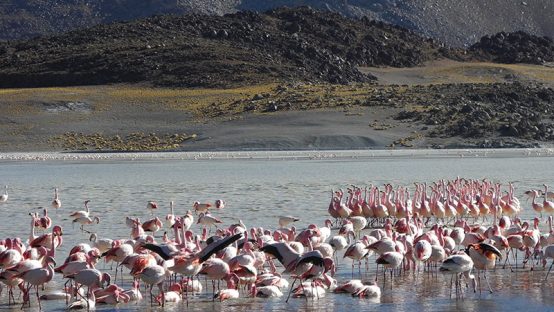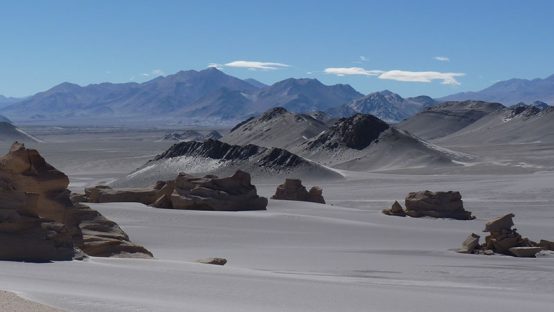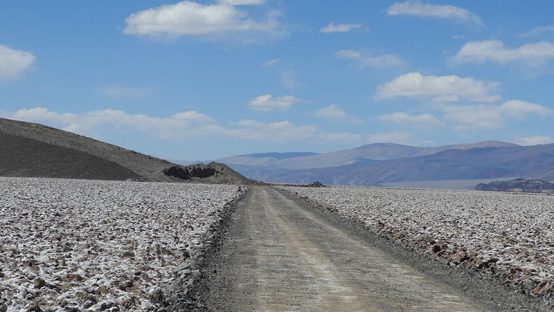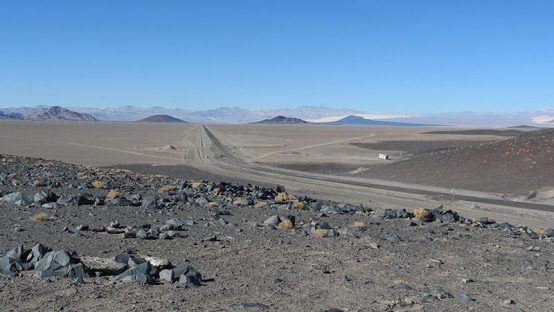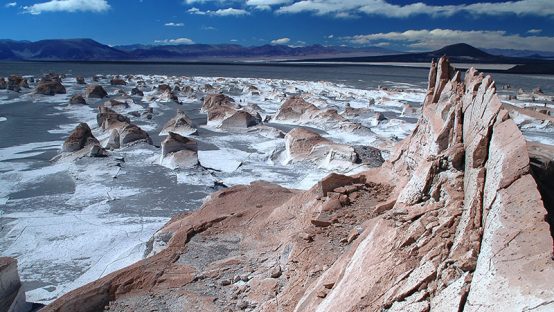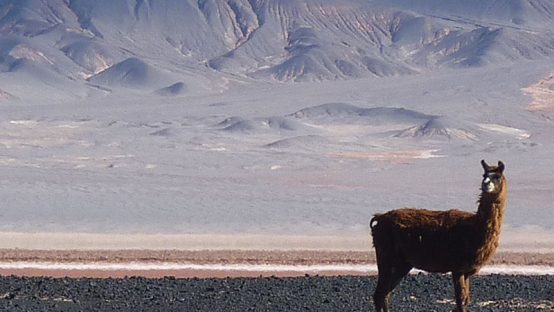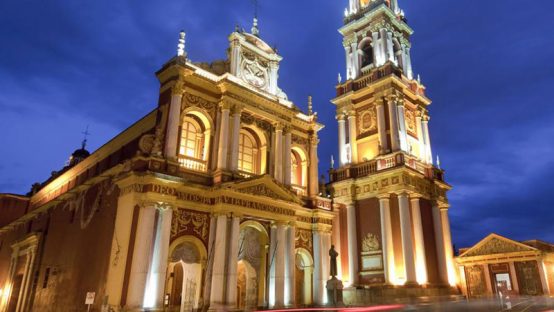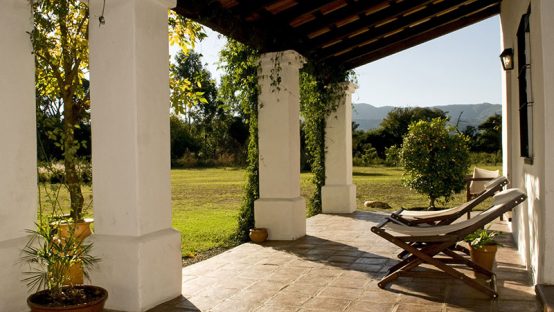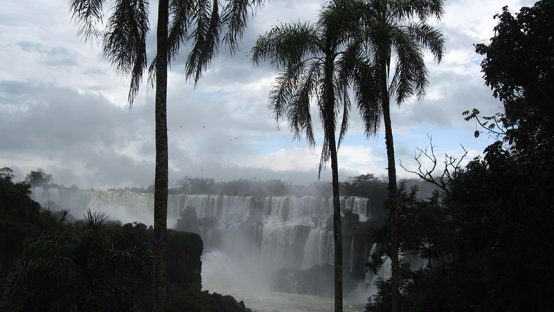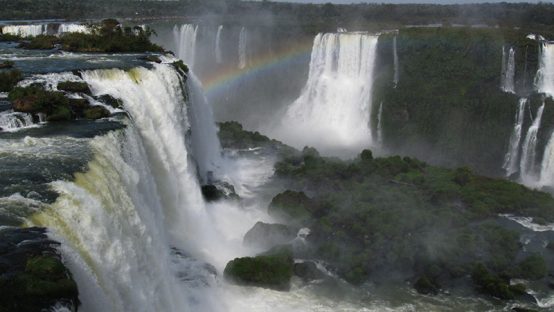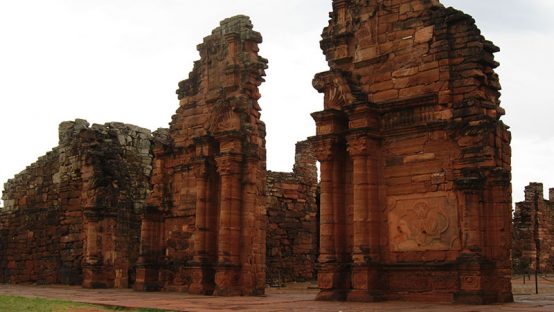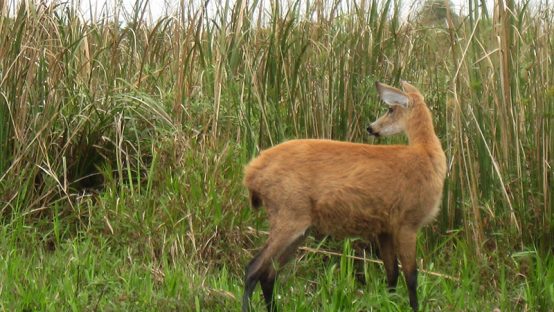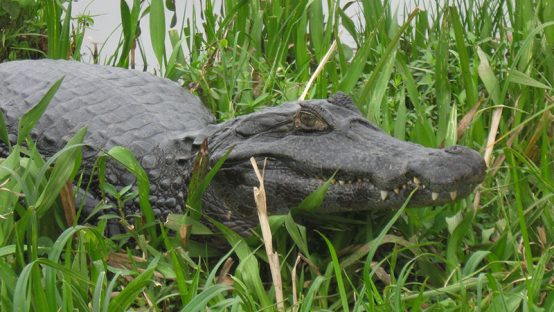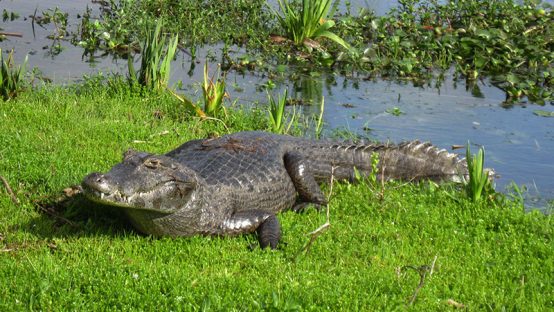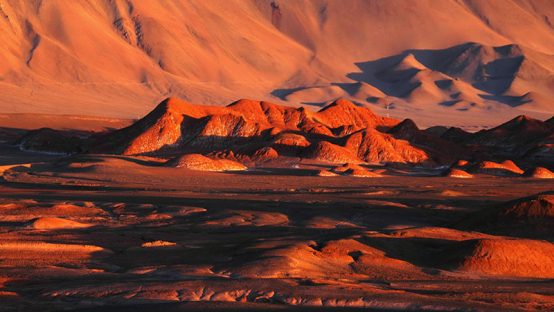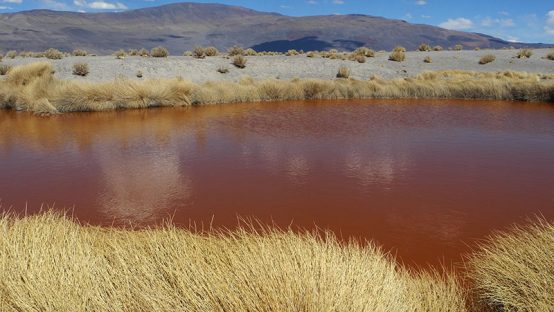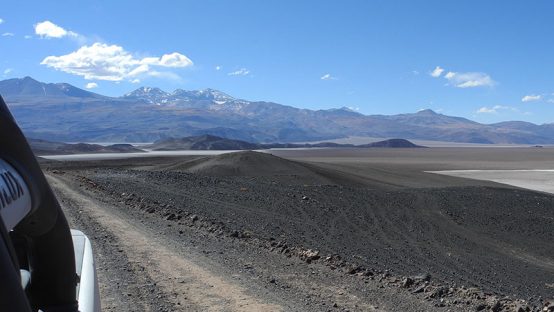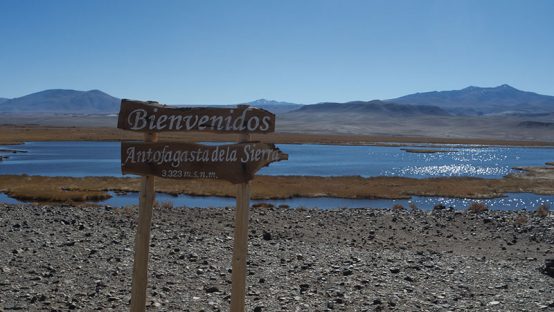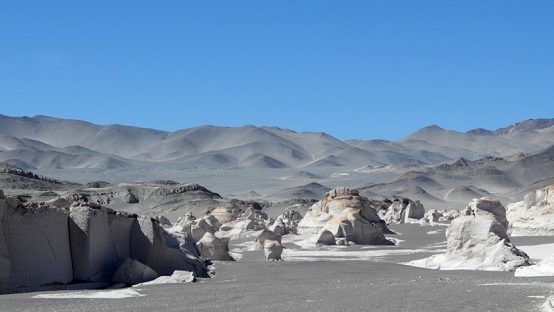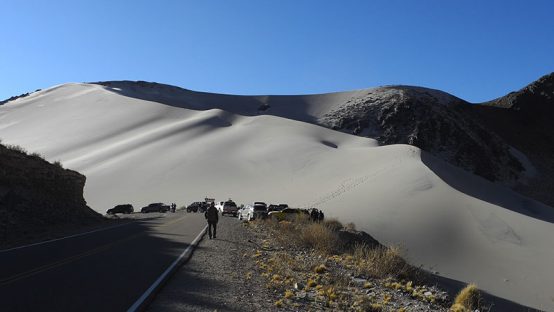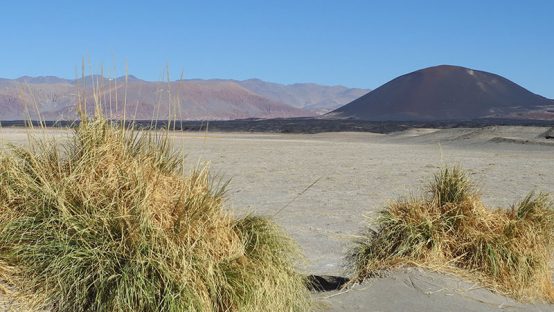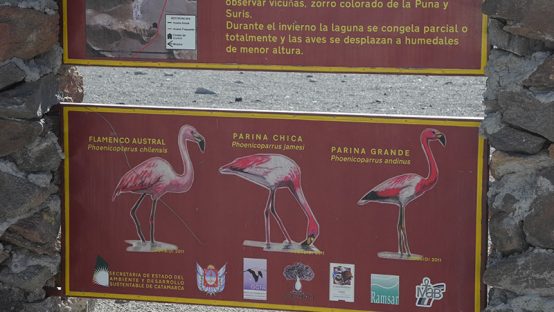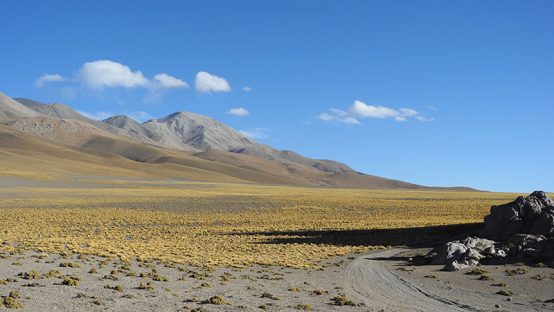We created this wonderful combination of destinations where visitors start in the Iberá Provincial Reserve, a protected area within the vast Iberá Wetlands, in northeast Argentina. It comprises swamps, marshes and lagoons, being home to an abundance of wildlife, including alligators, marsh deers and hundreds of bird species.
Trip continuos to the subtropical rainforest getting to know the unique waterfalls of Iguazú, and then heading on to the Argentinean Northwest High Plateau, where indigenous cultural destinations are settled in rugged mountains and deep valleys, whose bizarre rock walls seeped with a rainbow of colors. The Altiplano (Spanish for “high plain”) or Andean Plateau located in west-central South America, is the most extensive area of high plateau on Earth outside Tibet. The bulk of the Altiplano lies in Bolivia, but its northern parts lie in Peru, and its southern parts in Chile & Argentina.
There are impressive « salares » or salt flats due to its aridity, dominated by massive active volcanoes and several sites of pre-Columbian cultures, including the Chiripa, Tiawanaku and the Inca Empire. That makes this trip so unforgettable.
Day 1
Buenos Aires
Arrival at EZE international airport. Transfer to the hotel and 2 overnight stays at city hotel.
In the afternoon City Tour (4 hours), which is the best way to discover this huge metropolis. You will visit the most emblematic neighborhoods, as Plaza de Mayo, Government House, Caminito Street in la Boca, The Colon Theatre, 9 of July Avenue, The Obelisk, The Mayo Avenue, San Telmo, Puerto Madero, Retiro, Palermo, the cemetery and quarter of Recoleta.
Day 2
Buenos Aires – Posadas – Iberá (B|D)
Transfer to the domestic airport and flight to Posadas. Private transfer in a 4×4 vehicle to the marshlands of Esteros del Iberá. 3 overnight stays at beautifull posada Rancho de los Estero.
Day 3 & 4
Iberá (B|L|D)
The Iberá Wetlands are a mix of swamps, bogs, stagnant lakes, lagoons, natural slough and courses of water in the center and center-north of the province of Corrientes.
Iberá is one of the most important fresh water reservoirs in the continent and the second-largest wetland in the world after Pantanal in Brazil. It is of pluvial origin, with a total area of 15,000–20,000 km2 (5,800–7,700 sq mi).
Since 1982, part of the wetland is included within a provincial protected area, the Iberá provincial reserve, which comprises about 13,000 km2 (5,000 sq mi), the largest of such areas in Argentina. There are ongoing plans to further up its protection status to National park.
These days you will enjoy boat excursions to the lagoon for animal watching, hundreds of animals and birds, including reptiles (Yacaré), swamp deer, Carpinchos (Capibaras), monkeys, water birds, etc.
Day 5
Ibera – Iguazú (B)
Transfer from the hotel in Iberá to the bus terminal in Posadas, capital of Misiones province. Here starts a bus ride for about three hours to Puerto Iguazú. Transfer to the hotel and 3 overnight stays at a jungle-lodge.
Day 6
Waterfalls (B)
In the morning half day excursion to the Brazilian Falls, where you will cross the international Bridge over Iguazú river and visit the Iguassu National park in Brazil. A walk by different footbridges between a very exuberant vegetation allows to see magnificent and panoramic views of the Argentinean falls. On your way different native animal species can be seen and a variety of forest birds.
Day 7
Waterfalls (B)
Full day excursion to the Argentinean Falls. In guaraní, Iguazú is translated like “great Waters”. They were discovered in 1541 by the advanced man Alvear Núñez Cabeza de Vaca. In 1984, UNESCO declared them like natural patrimony of the humanity. Basically there are two circuits: one called “inferior” and another one “superior”. Along the inferior circuit you will reach the base of the falls. Along the superior one, the stroll is more sedentary. Panoramic views from the footbridges and the viewpoints make of your stay an unforgettable experience.
Day 8
Iguazú – Salta (B)
Transfer to the airport and flight to Salta. Transfer to city hotel, 2 overnight stays at beautiful Finca Valentina.
Day 9
Salta (B)
Today you will explore the historical city as well as a visit of the archaeological museum (inaugurated in 2004), which issues the mummies of three children discovered in 1999 on Llullaillaco- volcano, at a height of 6739 meters.
Day 10
Salta - Quebrada del Toro - San Antonio de los Cobres - Labyrinth Desert - Tolar Grande (B|L|D)
100 km paved road. 250 km gravel road.
Maximum Altitude 4.500 mts asl. Maximum altitude at final destination 3.500 mts asl
Just 30 km away from Salta, the Toro’s Gorge is a natural elevator connecting the green Valley of Lerma with the desert plateau known as Puna. In 95 km this wild Quebrada rises from 1200 meters up to 4000mts in Abra Blanca Pass, the entering point to the Puna. The Inca explored this passage as well since it was part of the Capaq Ñam or Royal Trail, a 5000 kilometer strategic trail built to unite the Inca Empire from Quito in Ecuador to Mendoza in Argentina. San Antonio de los Cobres is the actual Capital of the Puna, a dusty village with a colored community, our last point of civilization and arrival point of most tourists. Abra Chorrilos will be our highest point and there will learn about the Apacheta and its cultural importance for the Andean tradition. After the crossing of the geologically dying Salted lake of Pocitos, a 3-hour drive in wild and untouched nature begins. The Labyrinth Desert is a 10 million–year fossil dune desert formed by clay picks and gypsum crystals. Nowadays, it is possible to drive across this natural wonder, a must for photo safari lovers. Tolar Grande lies at the border of a giant depression, the Salar de Arizaro, one of the biggest salt flats in the world, and from this tiny old railway village built in 1940, there is a unique view over the western ridge of the Cordillera an infinite skyline of Volcanoes higher than 6.000 meters.
Day 11
Option 1: Tolar Grande - Caipe - Salar Rio Grande - Mina Casualidad - Tolar Grande (B|L|D)
130 km paved road and 120 km gravel & salt road. Maximum altitude 4.500 mt asl. Altitude at final destination 3.500 mts asl.
Mina Casualidad was a Mine City located in one of the most remote and amazing places on Earth. Just at the limit with Chile surrounded by the Highest Volcanoes of the world, between Sulphuric Mountains, Salted Lakes and Cobalt sky at 4.200 meters, used to live 3.000 people. Miners were working at 5.200 meters and their families and the administrative staff at the City of Mina Casualidad. The mine had been shut down by the Army during the 70’s and today Mina Casualidad is a unique Ghost Town.
Caipe was the old railway station where the mineral processed in the Mine city was carried on cargo train and then transported to Salta. From the abandoned Station, the traveler can have a wide view of the Giant Salar de Arizaro. In the afternoon on our way back to Tolar Grande, with just the perfect light of the sunset, all the Puna will offer its best scenery.
Option 2
Tolar Grande – Ojos de Mar – Hidden Dune – Tolar Grande – Caipe – Puesta de Sol/Sunset at Tolar Grande (B|L|D)
140 km earth track. Maximum Altitude 4.000 mts asl – Altitude in arrival point 3.600 mts asl
The morning will be dedicated to the exploration of the surrounding of Tolar Grande. Ojos del Mar are Blue Holes in the middle of a white salar, where in feb. 2009, researchers discovered a huge colony of living stromatolites (for more info: www.nature.com/news/2009/090917/full/news.2009.924.html). The surroundings of Tolar Grande offer chances of great small hikes. The best one is the hike to a hidden sand dune in the middle of the desert. From the highness of the dune the traveler will be rewarded by a 360° view over the area, from the Sacred Macon Mountain to the Llullaillaco Volcano, where the National Geographic discovered in 1999 at 6.735 meters an Inca Treasure including the body of 3 Inca children perfectly kept by ice and dryness. It is also a perfect place for meditation. For Lunch we will be back at Tolar Grande and after that we have time to relax in the hotel. In the afternoon we drive to Caipe. Caipe was the old railway station where the mineral processed in the Mine city was carried on cargo train and then transported to Salta. From the abandoned station, the traveler can have a wide view of the Giant Salar de Arizaro. On our way back to Tolar Grand the sunset will offer the perfect light so that you enjoy all the Puna in its best scenery. Puesta de Sol / Sunset viewed from above a hill just outside of Tolar Grande.
Day 12
Tolar Grande - Arita Cone - Antofalla Oasis - Vega Colorada - Quebrada de Calalaste - Antofagasta de la Sierra - El Peñón (B|L|D)
60 km paved road and 280 km gravel & salt road. Maximum altitude 4.500 mt asl. Altitude at final destination 3.400 mts asl.
The crossing of the Arizaro Salted dry lake resembling the ancient journey of the Arrieros (shepherds guiding caravans of animals to Chile). Arizaro means Vultures Cemetery, comes from that period when many animals (cows and horses) perished during the crossing of the salt flat. Antofalla is an important and spectacular example of a Puna Oasis; in the middle of a high altitude desert there is a green valley, thanks to a natural pure water spring, full of Alamos, Molles and Sauce trees. Antofalla, together with Antofagasta and Santa Rosa, were important stations for Llama caravans connecting this part of the Andes with the Oasis of Atacama. The Oasis is located just at the border of the longest salt flat in the world, among red mountains and lava strips. Antofalla is still inhabited by a tiny community of 60 people, they are all shepherds. We will have lunch in one of their homes and then cross the colored mirror of the salt lake. Above 4.200 meters with wide views over the Antofalla Volcano (6.400 mts) lays a kind of green field (Vega Colorada) home of llamas, suris (Andean ostrich), wild donkeys and vicuñas. The valley of Calalaste, just a few kilometers away from Vega Colorada is the best spot to find wild camelids. Antofagasta de la Sierra, was the biggest Oasis on the path connecting this side of the Andes with the Oasis of San Pedro de Atacama (Chile), it is a big village with more than 2.000 people who maintain their ancient traditions and culture. The name Antofagasta means “place where the sun shines” and it is surrounded by uncountable Volcano Peaks.
Day 13
El Peñón - Pumice Stone Field and/or Laguna Grande - El Peñón (B|L|D)
Km 130 sand, salt and rocky road.
Maximum altitude 4.500 mt asl. Altitude at final destination 3.400 mts asl
Program from October to April (austral summer):
In the morning: Visit to Campo de Piedra Pómez, a strange and stunning landscape carved into the rock that gives rise to its name: The Pumice, of purely igneous origin, was produced by a massive explosion of the volcanic stratum. This explosion was so powerful that if one could have seen it, it would have been similar to the mushroom cloud produced by a bomb. This cloud spread the ashes and debris in large areas and in different directions that were crystallized by the effects of the temperature and gave life to these wonderful rocks with special features, with plenty of holes produced by the escape of gases during the chilling stage. This degassing phenomenon made the rock very easy to carve by the winds of the Puna, arid and harsh winds that move freely through the region where they become the best and most prominent Andean rock sculptors.
In the afternoon: Visit to Laguna Grande reserve, a place of unique beauty that keeps fragile treasures of the environment. It is a saline lake that sits at an altitude of 4150 mts, path to the crater of the Galan volcano, the largest in the world. During winter, the water freezes completely, but when spring arrives, it becomes the largest gathering center of the Puna flamingo birds, also called Small Parina (Phoenicpterus jamesi), with more than 19,000 birds (25% of the known total population). It is also a place for summer congregation for the Andean flamingo (Phoenicpterus andinus) and it is a common nesting site of Southern flamingo (Phoenicopterus chilensis). We will visit Laguna Grande, respecting it as an Andean sanctuary and appreciating species of exotic birds in their natural habitat.
Program from May to September (austral winter):
Visit to Campo de Piedra Pómez, a strange and stunning landscape carved into the rock that gives rise to its name: The Pumice, of purely igneous origin, was produced by a massive explosion of the volcanic stratum. This explosion was so powerful that if one could have seen it, it would have been similar to the mushroom cloud produced by a bomb. This cloud spread the ashes and debris in large areas and in different directions that were crystallized by the effects of the temperature and gave life to these wonderful rocks with special features, with plenty of holes produced by the escape of gases during the chilling stage. This degassing phenomenon made the rock very easy to carve by the winds of the Puna, arid and harsh winds that move freely through the region where they become the best and most prominent Andean rock sculptors. This strange landscape of white labyrinths and climbing dunes is located a few miles to the west, on a track that we will pass, where the path continues through some sand that could be described as the dream of the explorer and overlanding adventurers. On the way, we will pass very close to a young volcano: the Carachi Pampa entirely painted in black by the spill of basaltic lava in ancient geological times and the lake of the same name.
Day 14
El Peñón - Hualfin - Santa María - Cafayate - Quebrada de las Conchas - Salta (B|L)
440 km paved road, 50 km gravel road.
Maximum altitude 4.500 mts asl. Altitude at final destination 1.100 mts asl.
After three days of Intense Trip on the High Desert Plateau, the North West has still plenty of surprises. The paved road from El Peñón to meet Route 40 is a 150 km long yellow field of Paja Brava, white lagoons and a deserted narrow canyon with rich vegetation inside. At Santa Maria you will experience a Real Argentine Asado, with a simple parrilla made by our gaucho friend. Then, we will do a quick stop in Cafayate, a pleasant town surrounded by green vineyards. In the afternoon with the best light of the day we’ll go across the Quebrada de las Conchas Gorge, 55 km of scenic sedimentary rock formations, dated from 40 to a hundred million years old, with geological formations as the Yacoraite or the Piraguas of great importance. Salta and its green valley will welcome us after 5 days of unique adventure. 1 overnight at Finca Valentina
Day 15
Salta – Buenos Aires (B)
Transfer to the airport and flight to Buenos Aires. Transfer to the international airport, departure flight.
The Itinerary is subject to weather conditions in the region to be visited, for this reason last minute changes may take place in order to ensure a safe trip.
Included Services:
- All overnight stays at 3* hotels incl. breakfast.
- Buenos Aires: Private transfers from/to airports and city tour with English guide.
- Iberá, Iguazú, Salta: Transfers & excursions in private service / English guide.
- Meals as per programme.
- Entrance fees in reserves or national parks.
Not included
- Domestic flights.
- Personal expenses.


